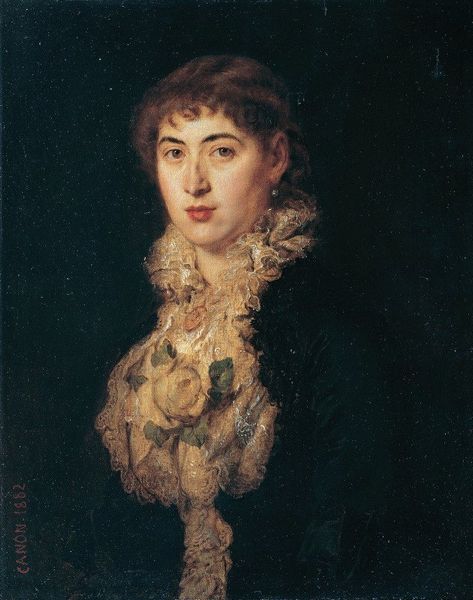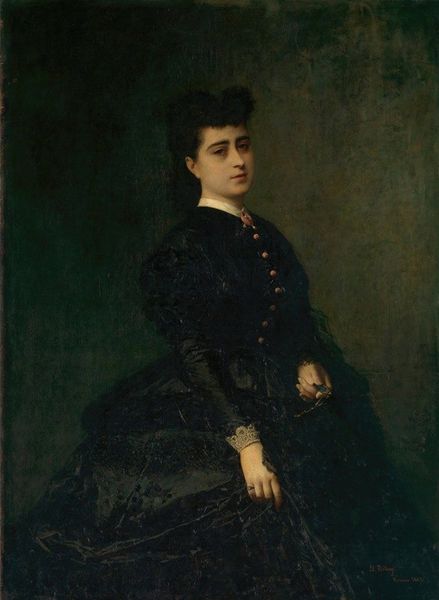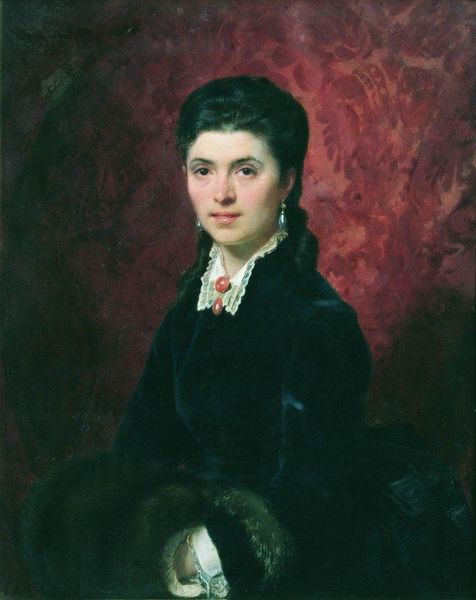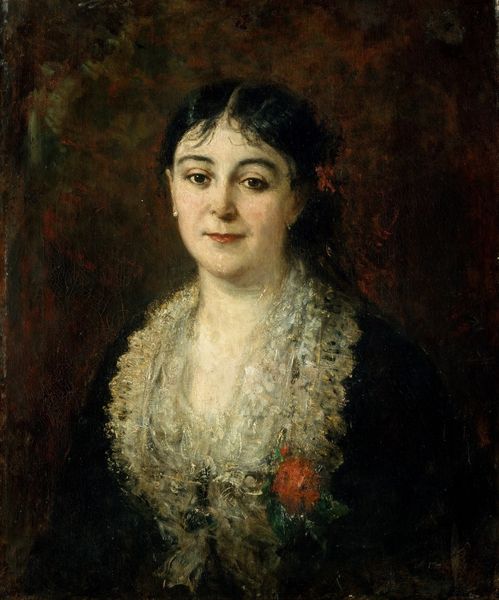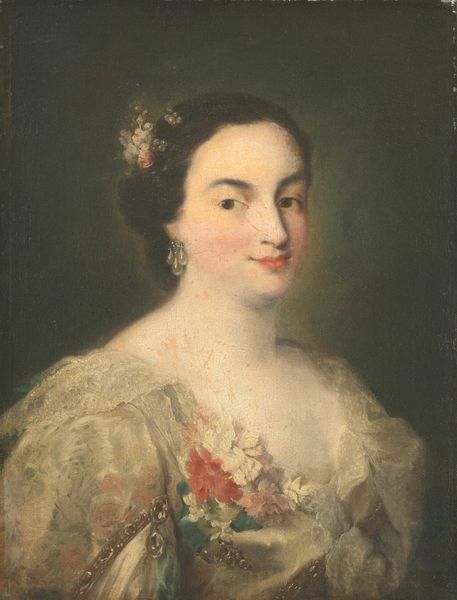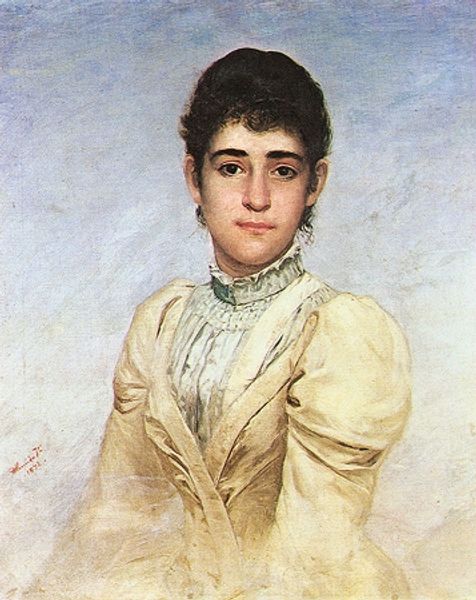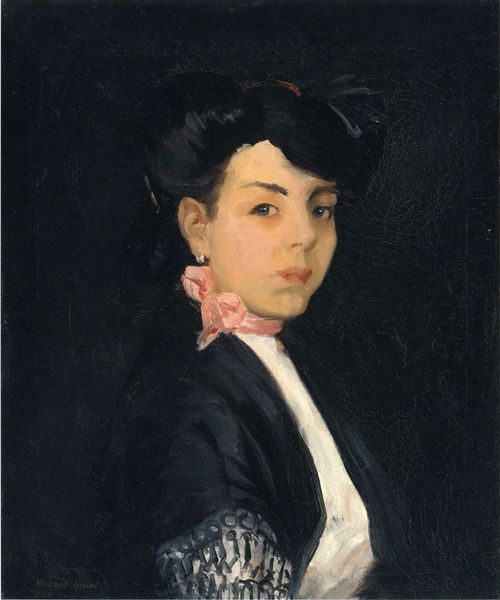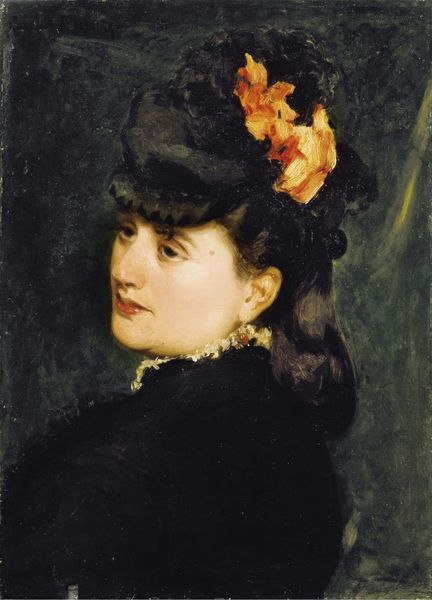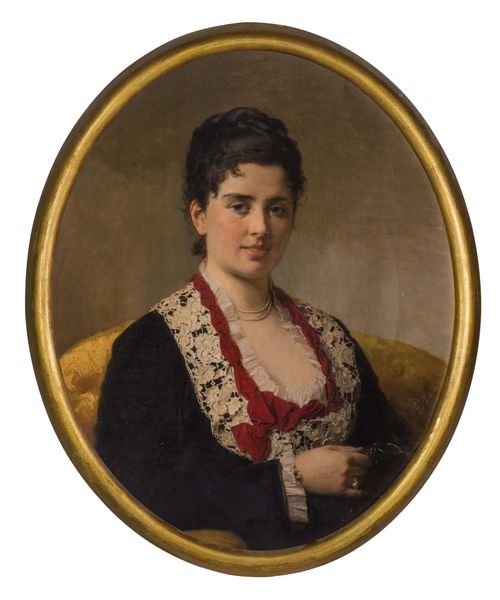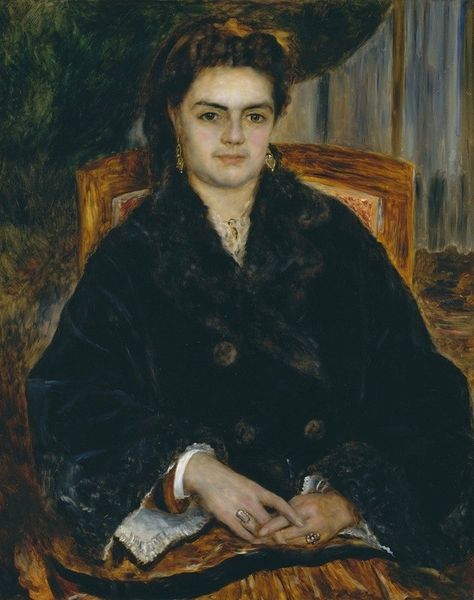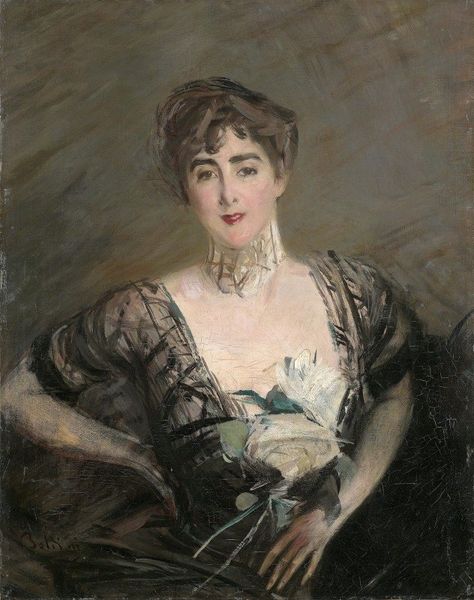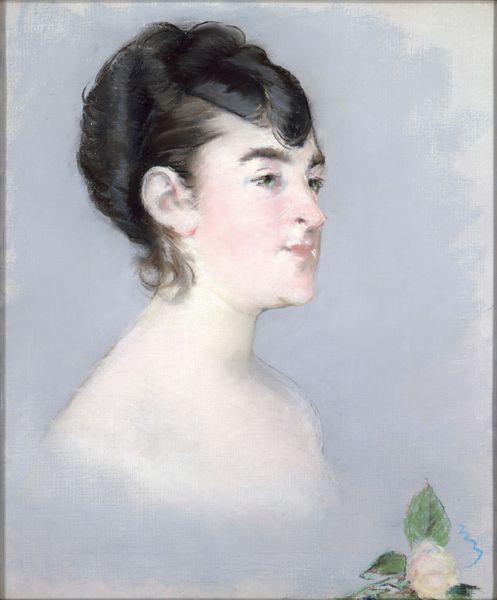
Copyright: Public domain
Editor: We're looking at Pericles Pantazis' "Portrait of Varvogli," painted in 1875 using oil. I'm struck by its formality and the sitter's gaze; she appears both self-assured and a little melancholy. How do you interpret this work? Curator: I see a negotiation of power and representation, which is always present in portraiture, especially of women in the 19th century. Consider the context: Greece navigating its modern identity, still wrestling with Ottoman influences, while mirroring Western European artistic conventions. The sitter's fashionable attire positions her within a certain social class, yet her expression hints at a more complex inner life. Does this contrast prompt you to consider what constraints or expectations existed for women of that era? Editor: It does. I'm thinking about how women were often portrayed as objects of beauty or symbols of domesticity. But she looks almost confrontational. Curator: Exactly. The academic style lends itself to portraying her as an idealized type. Yet, even within those conventions, the artist subtly allows for an individual presence to emerge, hinting at the negotiations between societal expectation and personal identity. I wonder what conversations took place between the artist and the sitter? Editor: I hadn't considered the collaboration that might be taking place, especially the negotiations between how the sitter wants to be seen, versus how she’s supposed to be seen. Curator: Precisely! And those layers are what makes this painting more than just a pretty picture, don’t you think? Editor: Definitely. I now see it as a snapshot of social expectations.
Comments
No comments
Be the first to comment and join the conversation on the ultimate creative platform.
